Virtual Shoe Fitting: How Technology is Transforming the Online Shoe Shopping Experience
Table of Contents
- Why It Matters in Online Shopping
- How the Technology Works
- Benefits of Virtual Shoe Fitting for Consumers
- Key Players and Platforms in the Space
- Improving Sustainability Through Better Fit
- Modelia and the Expansion into Footwear Visualization
- Looking Ahead: The Future of Digital Footwear Shopping
- Best Virtual Try-On Tools for Retailers to Boost Sales and Engagement
- Final Thoughts: Stepping into a New Era of Shoe Shopping
In today’s digital world, the way we shop has evolved dramatically. From clothing and accessories to home decor and electronics, nearly everything is available online. But for years, one category of retail has remained a significant challenge in the digital space: shoes. Finding the right pair with the perfect fit is a deeply personal and often tactile experience. Now, thanks to the innovation of virtual shoe fitting, this barrier is being broken.
Virtual shoe fitting is a technology that enables shoppers to determine their shoe size and fit with greater accuracy using digital tools, advanced imaging, artificial intelligence, and augmented reality to replicate the store experience from the comfort of home. This not only makes online shoe shopping more reliable but also improves convenience, confidence, and customer satisfaction.
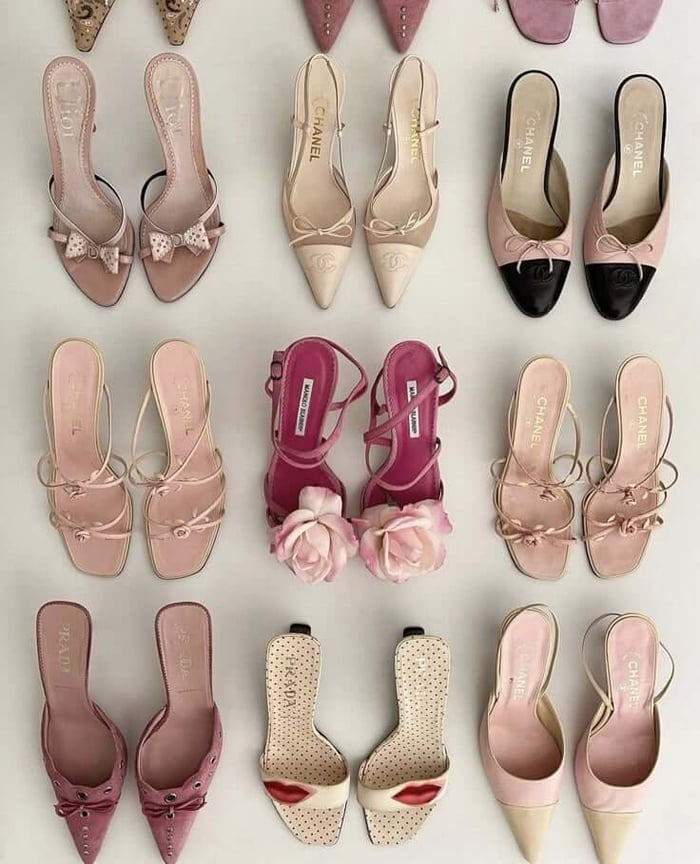
These systems often involve 3D foot scanning, real-time try-on simulations, and personalized sizing recommendations. Shoppers can use their smartphone cameras or upload images to receive detailed assessments of foot dimensions and suggested sizes across different brands.
Some tools even allow for an augmented view of the shoes on the shopper’s feet, letting users virtually walk in them, rotate the image, and examine how the shoe conforms to their unique shape. This new approach eliminates guesswork and makes online shoe shopping more intuitive and accurate.
Why It Matters in Online Shopping
Footwear is one of the most frequently returned product categories in e-commerce. Reasons for returns often include poor fit, discomfort, or the shoe looking different than expected. These issues create frustration for shoppers and financial strain for retailers. Virtual shoe fitting addresses these challenges by enhancing the pre-purchase experience. When customers have access to more accurate and interactive fitting tools, they are less likely to make returns and more likely to complete a purchase. The result is a win-win situation: better user experience and lower operational costs.
How the Technology Works
Different platforms use various methods to achieve virtual shoe fitting:
3D Foot Scanning: This method uses a smartphone camera or scanner to capture the exact shape and size of a foot. The system then compares this data to shoe models for personalized recommendations.
Augmented Reality Visuals: These overlays show users what a shoe would look like on their foot in real time, using advanced imaging technology.
Size Matching Algorithms: Based on past purchases, returns, and feedback, some platforms suggest the best size in a specific brand or style.
All of these features work together to replicate the in-store experience and remove friction from the digital purchase journey.
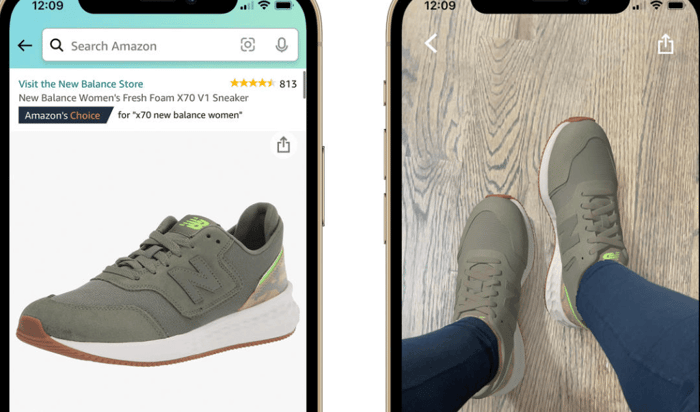
Benefits of Virtual Shoe Fitting for Consumers
The biggest advantage of virtual shoe fitting is the trust it builds in customers. When shoppers can see how a shoe fits and looks before purchasing, they are more likely to make the right choice. Other benefits include the convenience of not having to leave home and go from store to store, sizing recommendations based on personal measurements, the ability to try on different styles and colors digitally, and a decrease in the number of returns due to fewer sizing errors.
These improvements are especially important for those who find it difficult to shop in physical stores, such as people with limited mobility or those living in remote areas.
On the other hand, for brands, virtual shoe fitting facilitates stronger customer relationships and improved sales performance. This tool allows for better customer insights, as brands gain valuable data on foot shape, preferences, and purchasing behavior. It also results in lower return rates, improved marketing, and higher conversion rates, as shoppers who use virtual fitting tools are more likely to complete their purchase.
As a result, more and more footwear companies are investing in this technology and integrating it into their digital strategies, as this is reflected in the benefits.
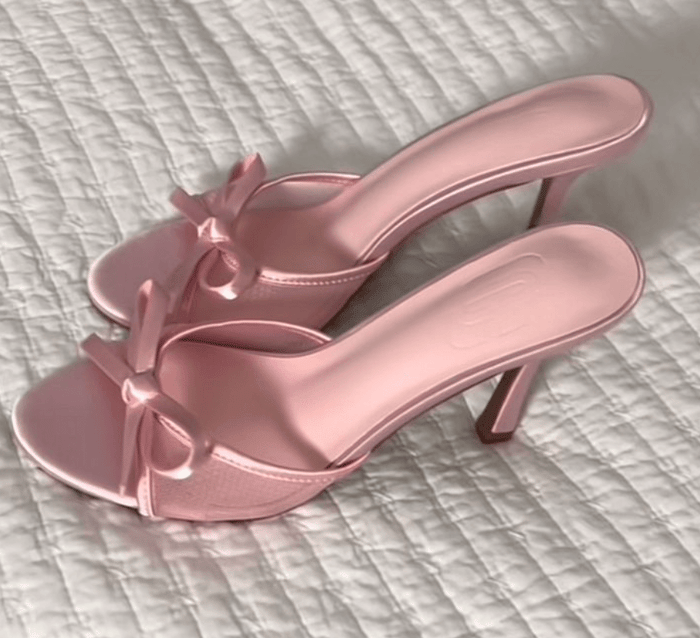
Key Players and Platforms in the Space
Several companies are leading the development of virtual shoe fitting tools:
Volumental: Offers 3D foot scanning and size-matching services for major shoe brands.
Wanna Kicks: An app that uses augmented reality to allow users to see how sneakers look on their feet.
FeetSizr: Provides custom fit solutions using detailed foot scans and AI matching.
These platforms are setting new standards for what digital shoe shopping can offer.
During the COVID-19 lockdown, Balenciaga launched an innovative Instagram filter that allowed users to virtually try on a pair of their iconic sneakers. By using augmented reality technology through the app’s camera, users could see how the shoes would look on their own feet in real time. This digital experience not only captured the attention of fashion enthusiasts stuck at home but also marked a bold step toward blending luxury fashion with interactive technology. The filter became a creative and engaging way for the brand to maintain relevance and connection with its audience during a time when physical retail was inaccessible.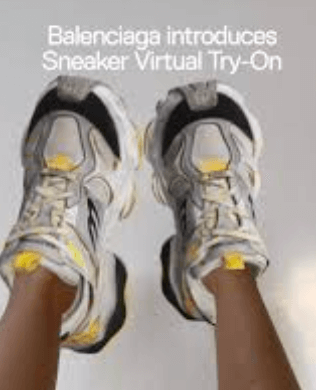
Interestingly, virtual shoe fitting is not limited to online use. Many physical stores are using in-store scanning stations or augmented reality mirrors to streamline the try-on process. This creates a hybrid shopping model that combines the best of both worlds: digital accuracy and physical interaction, this model is known as "phygital experience". These innovations also help sales staff provide better service, reduce wait times, and instantly personalize recommendations.
Improving Sustainability Through Better Fit
By helping customers find the right size the first time, virtual shoe fitting also supports more sustainable practices. Fewer returns mean less shipping, less packaging, and fewer wasted products. Brands can also better manage their inventory, produce smarter, and avoid overstocking unpopular sizes.
Sustainability is an increasing concern for both consumers and companies, and this technology offers a practical way to contribute to more responsible fashion consumption.
Modelia and the Expansion into Footwear Visualization
While known primarily for virtual fashion content, platforms like Modelia are expanding into footwear, providing high-quality visualizations that support shoe fitting and digital presentation. This platform is working on a new tool that simulates how shoes fit on different avatars or real user photos, adding another layer of realism and engagement to the online shopping experience. For brands, this tool will provide an efficient and elegant way to showcase collections without relying on traditional photography or physical prototypes and for consumers, it will offer a visually rich and easy to navigate interface that makes choosing shoes a more enjoyable and informed process.
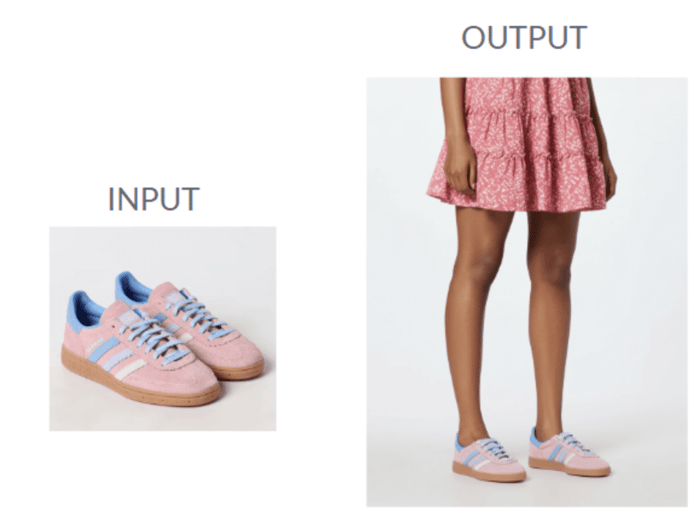
Looking Ahead: The Future of Digital Footwear Shopping
As technology continues to advance, virtual shoe fitting is expected to become more precise, personalized, and accessible. Possible future developments include:
Full-body avatars that allow for complete outfit visualization.
Voice-assisted fitting tools for added accessibility.
Integration with smart footwear that tracks comfort and usage over time.
Virtual reality showrooms where users can walk through collections in immersive environments.
These innovations will continue to shape the future of retail, offering customers a smarter and more seamless way to shop.
Best Virtual Try-On Tools for Retailers to Boost Sales and Engagement
Virtual try-on technology is transforming the retail landscape, helping brands increase sales, improve customer experience, and reduce returns. By letting shoppers see products on themselves or in their space before purchasing, retailers can create a more interactive and personalized shopping journey. Here’s a look at some of the best tools making this possible.
1. Modelia
What it does well: Modelia offers advanced 3D virtual try-on for apparel and accessories, with AI-driven sizing recommendations and realistic garment movement.
Where it falls short: Requires high-quality product images for the best results.
Best for: Fashion brands and e-commerce stores seeking detailed virtual fitting solutions.
2. Fashn.ai
What it does well: Provides AI-generated try-on experiences with customizable avatars and instant visualizations.
Where it falls short: Limited integration options with certain e-commerce platforms.
Best for: Brands experimenting with innovative digital experiences.
3. Zeekit (acquired by Walmart)
What it does well: Allows users to upload photos and see how clothing fits in real-time, popular among large retailers.
Where it falls short: Best suited for large-scale implementations; smaller brands may face costs challenges.
Best for: Retailers looking for a proven, high-quality virtual fitting solution.
4. Vue.ai
What it does well: Offers end-to-end AI solutions including virtual try-on, personalized recommendations, and inventory insights.
Where it falls short: Advanced features may require technical expertise to implement fully.
Best for: Retailers focused on AI-driven personalization across the customer journey.
5. Perfect Corp (YouCam Makeup & YouCam Fashion)
What it does well: Excellent for beauty, fashion accessories, and cosmetics, with AR-powered try-on and social media integration.
Where it falls short: Primarily focused on beauty and smaller apparel items, less suited for full wardrobe simulation.
Best for: Brands combining virtual try-on with social engagement campaigns.
Key Benefits for Retailers
Boost Conversions: Shoppers are more likely to buy when they can visualize fit and style.
Reduce Returns: Accurate try-on leads to fewer sizing or style mismatches.
Enhance Customer Engagement: Interactive tools keep users on your site longer.
Gain Insights: Track preferences and trends for smarter inventory and marketing decisions.
Final Thoughts: Stepping into a New Era of Shoe Shopping
Virtual shoe fitting is not just a digital convenience; it is a transformative step in the evolution of online retail. By bringing together accuracy, engagement, and innovation, it solves one of the most persistent challenges in the fashion industry.
For consumers, it means confidence and comfort. For brands, it means efficiency and insight. And for the future of fashion, it signals a shift toward smarter, more sustainable, and more satisfying shopping experiences. As this technology continues to develop, virtual shoe fitting is set to become the new standard for buying footwear in the digital age.
Click here and start exploring the world of virtual fitting with Modelia
How would you rate this article:
Related Articles
- 10 Best Fashion e-Commerce Sites to Watch in 2025
- Fashion Photography: Tips, Trends, and Techniques for Stunning Visuals
- 5 Free AI Face Swapping Online - Best Tools
- Top Sustainable Outdoor Clothing Brands for Eco-Friendly Style
- Best Free AI Image Generators You Can Use in 2026
- AI Photo Restoration: Revive Old Photos with Cutting-Edge Artificial Intelligence Technology
- AI-Powered Video Creation: How Artificial Intelligence is Revolutionizing Video Production
- How to Flip an Image in Seconds
- Best 10 Alternatives to X-Design for AI-Enhanced Fashion Content
- Transform Your Photos Using AI Editing Tools

